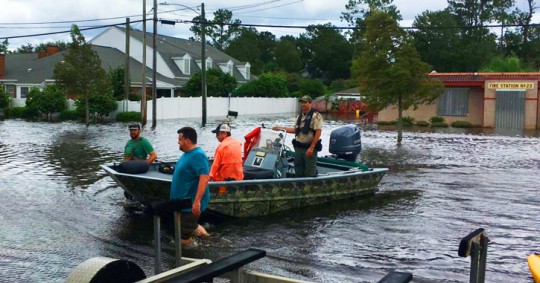Florida’s Irma Focus Turns To Recovery
September 13, 2017
More than 5.5 million homes and businesses in Florida remained without power at midday Tuesday after Hurricane Irma plowed through the state.
Food, water and gas deliveries were starting to return in Central and South Florida as the demand swells from returning evacuees. Airports started to provide limited operations. And the process of allowing people to return to homes was underway in most areas outside the storm-ravaged lower Florida Keys.
Irma is expected to cost the state and federal government billions of dollars.
Meanwhile, Florida Power & Light spokesman Rob Gould asked customers on Tuesday to be patient as they wait for restoration of electricity.
“We understand what it means to be in the dark. We understand what it means to be hot and without air conditioning,” Gould said. “We are out there 24-7. This will not be just a daylight operation. We will be restoring power day and night.”
The company, with more than 20,000 restoration workers, anticipates getting power back by the end of the weekend to most of its customers in eastern parts of Florida.
A deadline of Sept. 22 has been set for restoring power to customers in the company’s western counties, which include all or parts of Manatee, Hardee, Sarasota, DeSoto, Charlotte, Lee, Hendry, Collier and Monroe.
The timelines don’t include homes and areas that were completely destroyed by the storm, Gould noted.
Juno Beach-based FPL reported 2.8 million of its nearly 5 million homes and businesses were still without power on Tuesday.
St. Petersburg-based Duke Energy Florida had 1.27 million of its 1.8 million accounts in the dark on Tuesday. And Tampa Electric still had to reconnect 300,000 of its 750,000 accounts on Tuesday.
“Restoration will take days — but, thankfully, not weeks,” Tampa Electric President and CEO Gordon Gillette, said in a prepared statement.
Tampa Electric said power had already been restored to about 20 percent of its customers who had been impacted.
Statewide, electricity has been restored to more than 1 million homes and businesses as the broader recovery process got underway from Irma, which hit the Keys and Southwest Florida on Sunday and traveled up the state before exiting North Florida on Monday.
“What you’re going to see today all around the state, is you’re going to see more resources,” Gov. Rick Scott said Tuesday morning while at Jacksonville International Airport. “This impacted the whole state, so it’s hard to pre-position all the assets you’d want to position if the storm just came from one coast or the other. But even with that, I think the number is over 30,000 individuals from out of state are helping us get our power on.”
Scott had earlier in the day taken an aerial tour of Jacksonville with the Florida National Guard. The U.S. Coast Guard had provided Scott with a similar view of Key West on Monday.
Damage assessment continues in the Florida Keys, where engineers are determining if bridges can handle the weight of returning vehicles. Water and sanitation also remain issues, Scott said.
Problems in Jacksonville stem from flash flooding from the St. Johns River. The U.S. Coast Guard reported rescuing more than 100 people Monday in Jacksonville.
Jacksonville Mayor Lenny Curry, who put the number that needed rescuing from floodwaters at around 300 on Tuesday, expressed some frustration about people not heeding evacuation warnings.
“It would have been nice if there weren’t people in the areas that were affected by the surge, but the first responders just stepped right up and did their jobs,” Curry said.
Curry said he would have evacuated if he wasn’t the city’s mayor.
“We’re not trying to be difficult. We’re not trying to make people’s lives inconvenient,” Curry added. “I think the governor said it best leading up to this, evacuations are not about convenience, they’re about safety.”
Search and rescue operations continued in the Keys and Southwest Florida. Among other developments Tuesday:
— More than 94,000 people remained in about 400 shelters still in use across Florida.
— The Herbert Hoover Dike around Lake Okeechobee remained safe, according to the U.S. Army Corps of Engineers.
— The Florida Highway Patrol was escorting 44 tractor-trailers with relief supplies and 600 utility trucks into Southwest Florida.
— Port Tampa, Port Everglades and Port Canaveral reopened for fuel trucks.
— Florida reopened 20 state parks in the Panhandle, but 147 others throughout the peninsula remained closed Tuesday morning.
— Lakeland-based Publix reported 22 of its 776 stores in Florida remained closed on Tuesday.
by The News Service of Florida




Comments